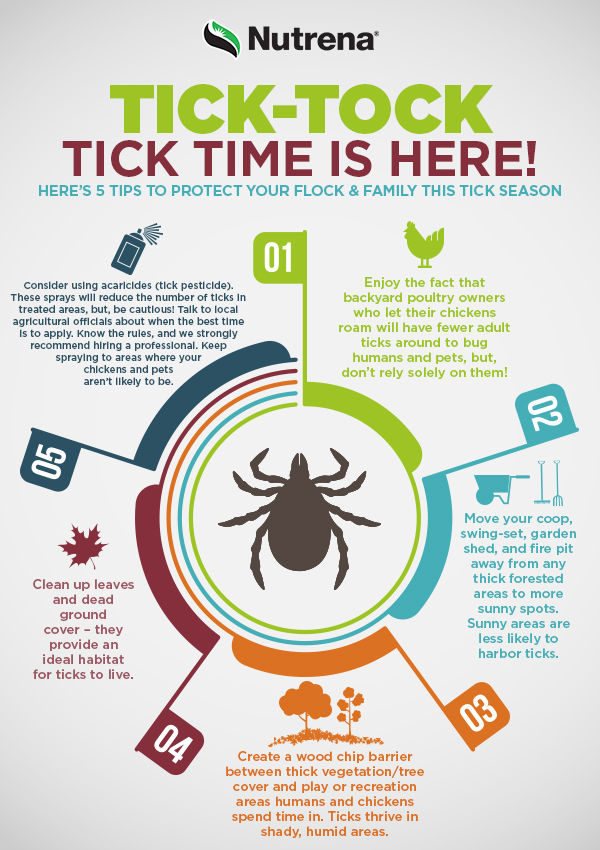Chickens and Ticks: Tick-Tock, Tick Time is Here!

The warmer than average winter temps we enjoyed the past few years are taking revenge on our backyards.
High tick populations are the result. Besides being pesky, the risk of Lyme disease contraction is reason for concern.
One study recently conducted in Connecticut showed that nearly 40 percent of ticks tested this year have Lyme disease bacteria, according to an article recently published in The Day. In addition, ticks are simply out for blood- and are host neutral. Meaning, your chickens may get ticks, and be exposed to Lyme bacteria, too.
But birds eat bugs, right? When Lyme disease was realized as serious concern for humans in 1992, Vassar College in New York conducted a study to review the case for Guinea Fowl and reducing Lyme disease risk.
After all, the loud, shrieking bird consumes a diet that’s 90% insects!
They assessed the impact guinea fowl would have on tick densities in backyards over the course of a year.
It was determined that guinea fowl do reduce the amount of adult ticks found in backyards, but, unfortunately, didn’t reduce the amount of nymphal (young) ticks- the main connection to Lyme disease.
If you raise chickens, they’ll eat the ticks, too – just not as much as their rock-star cousin, the Guinea.
So what’s a chicken lady to do?
Well, because chickens are a host to ticks, too, we recommend a multi-angle approach to take care of ticks to protect your flock and your family, here are some quick tips to get you started:
Information gathered from:
https://www.caryinstitute.org/sites/default/files/public/reprints/Price_2004_REU.pdf
https://www.ct.gov/caes/lib/caes/documents/special_features/tickhandbook.pdf
